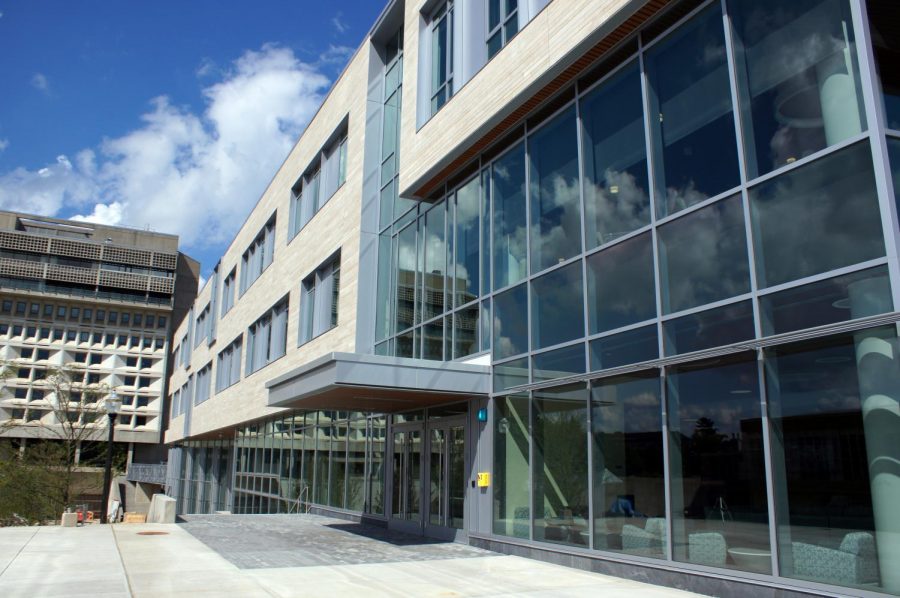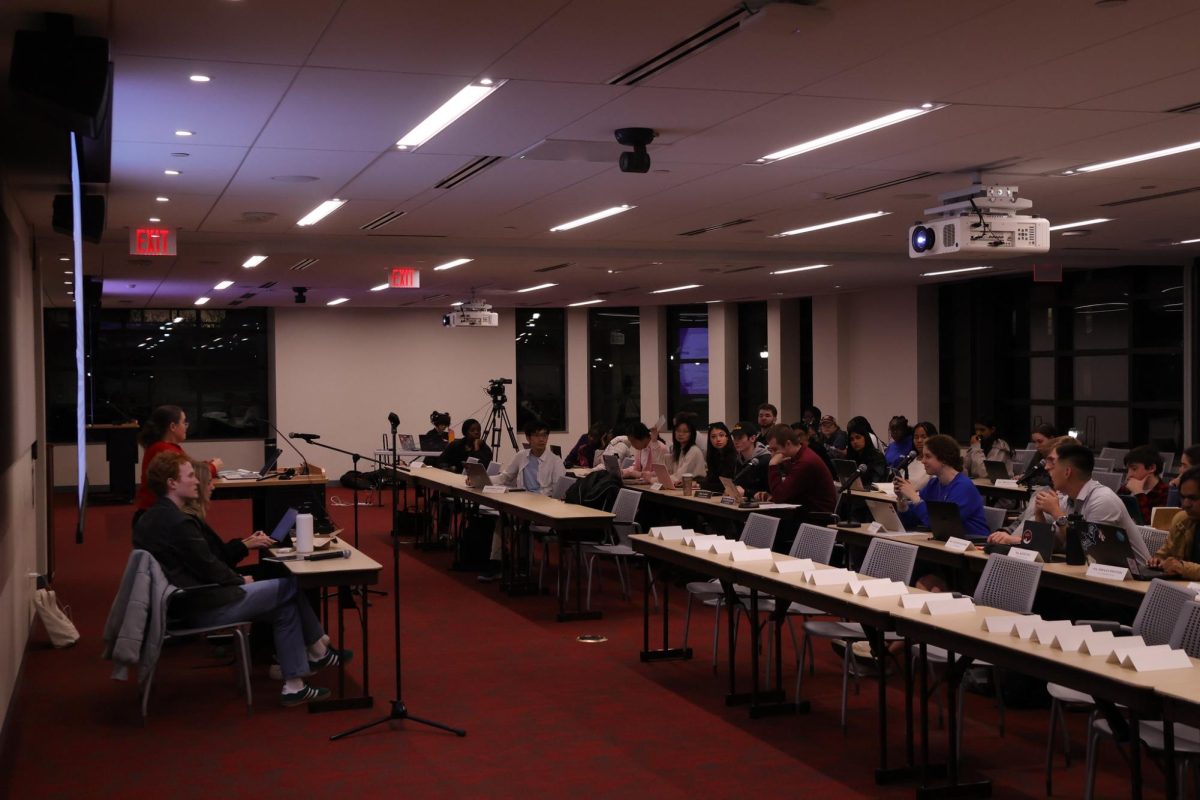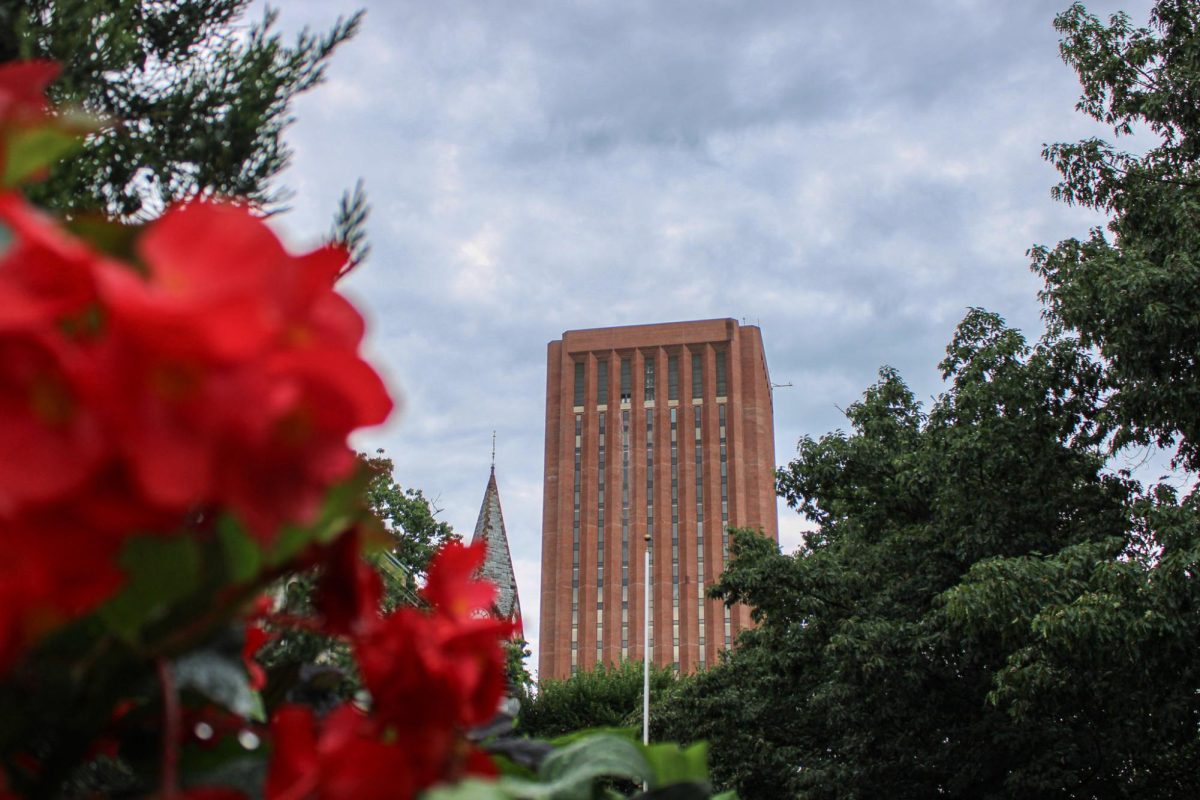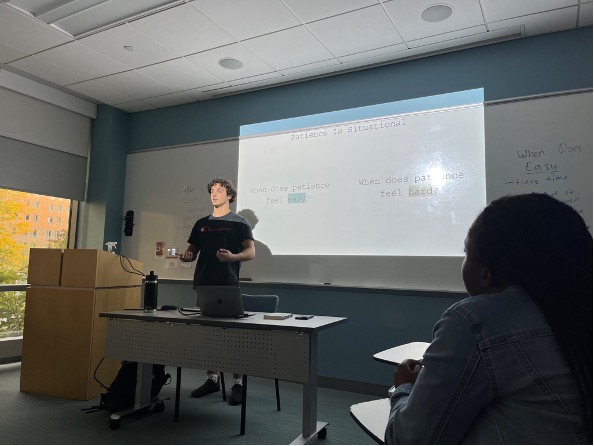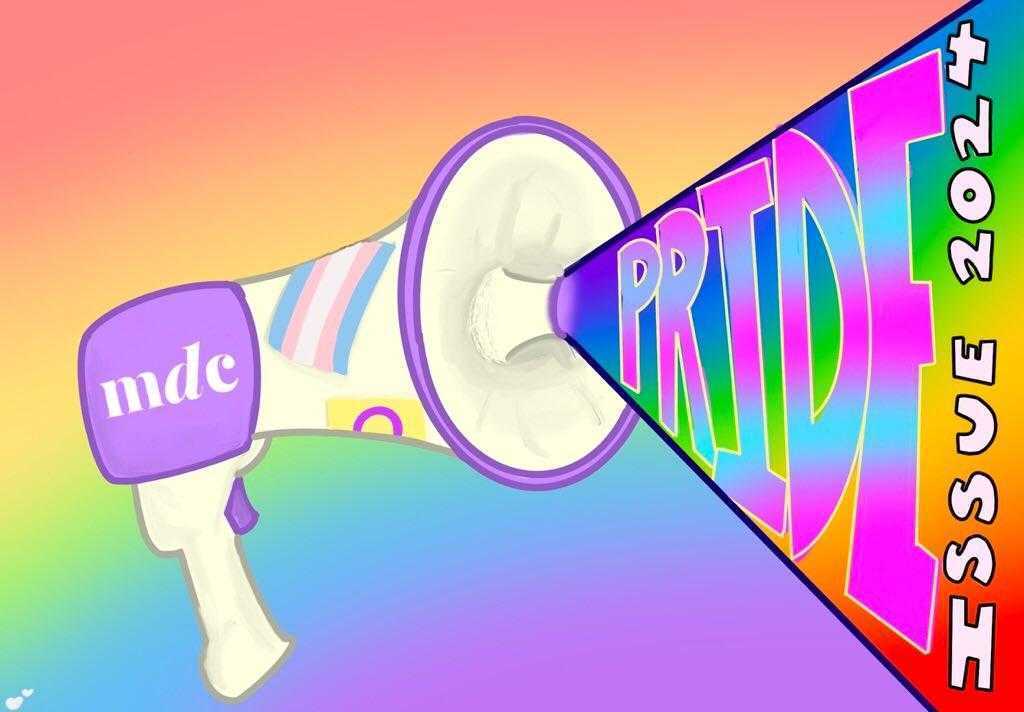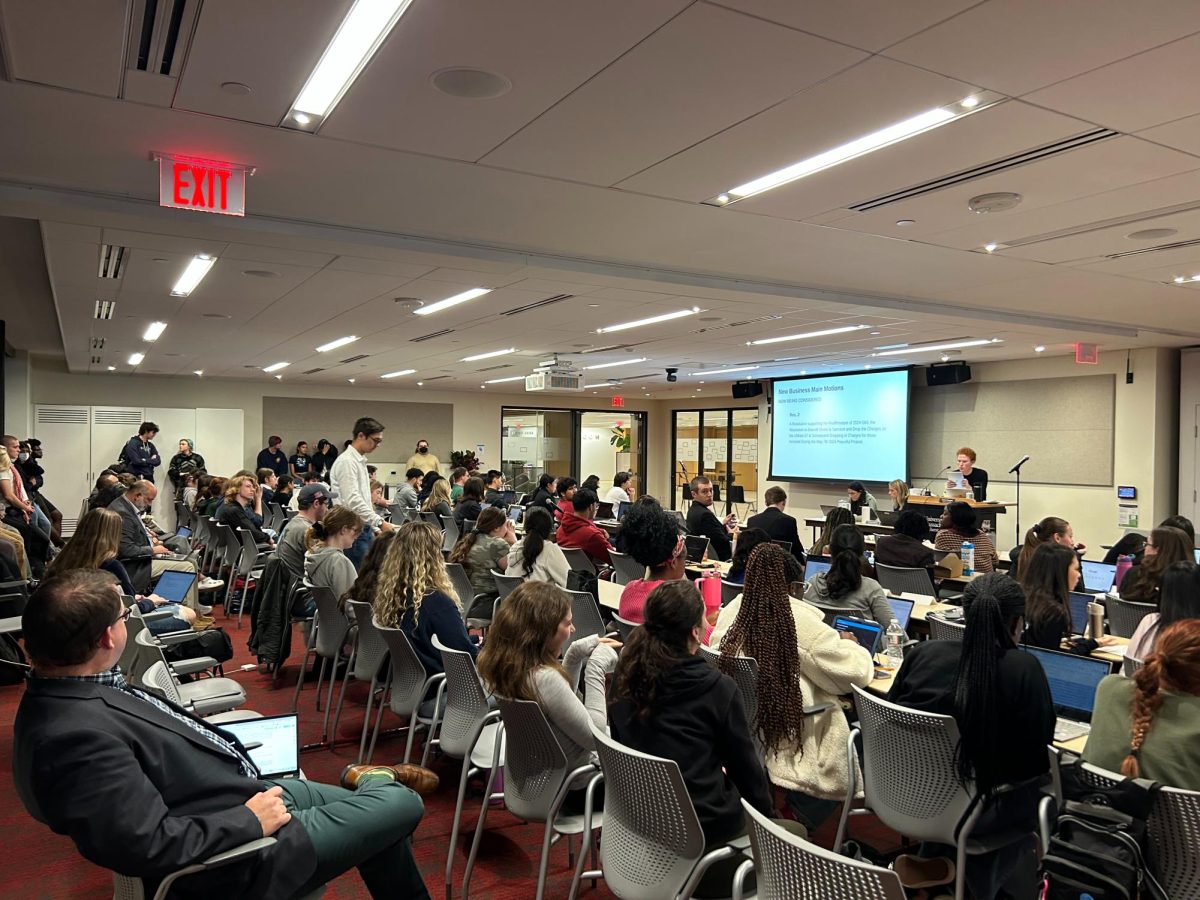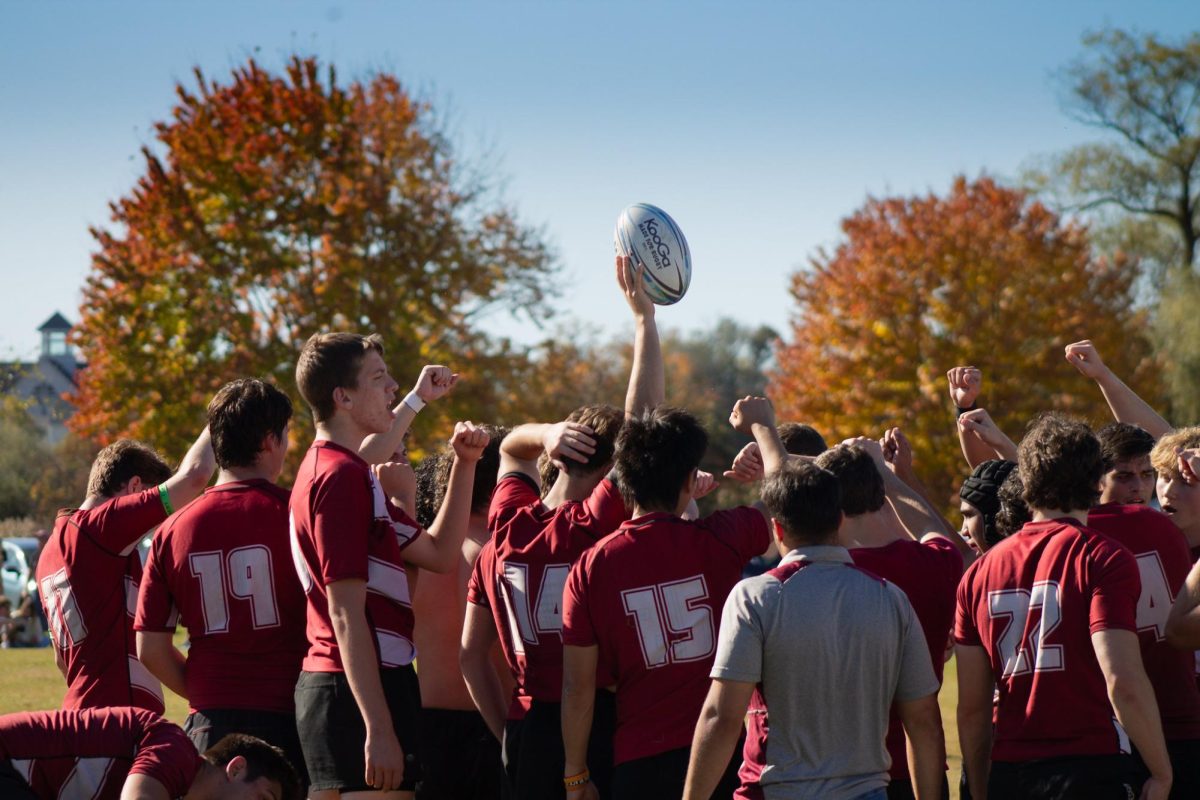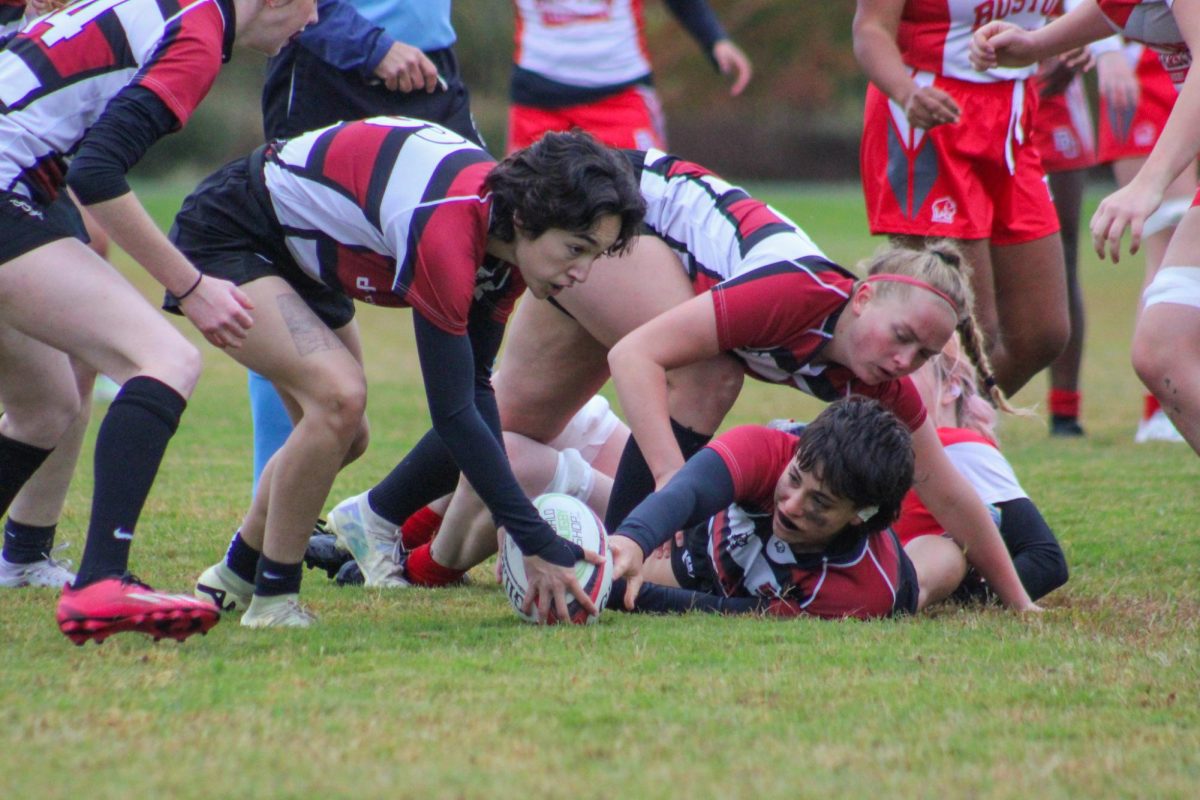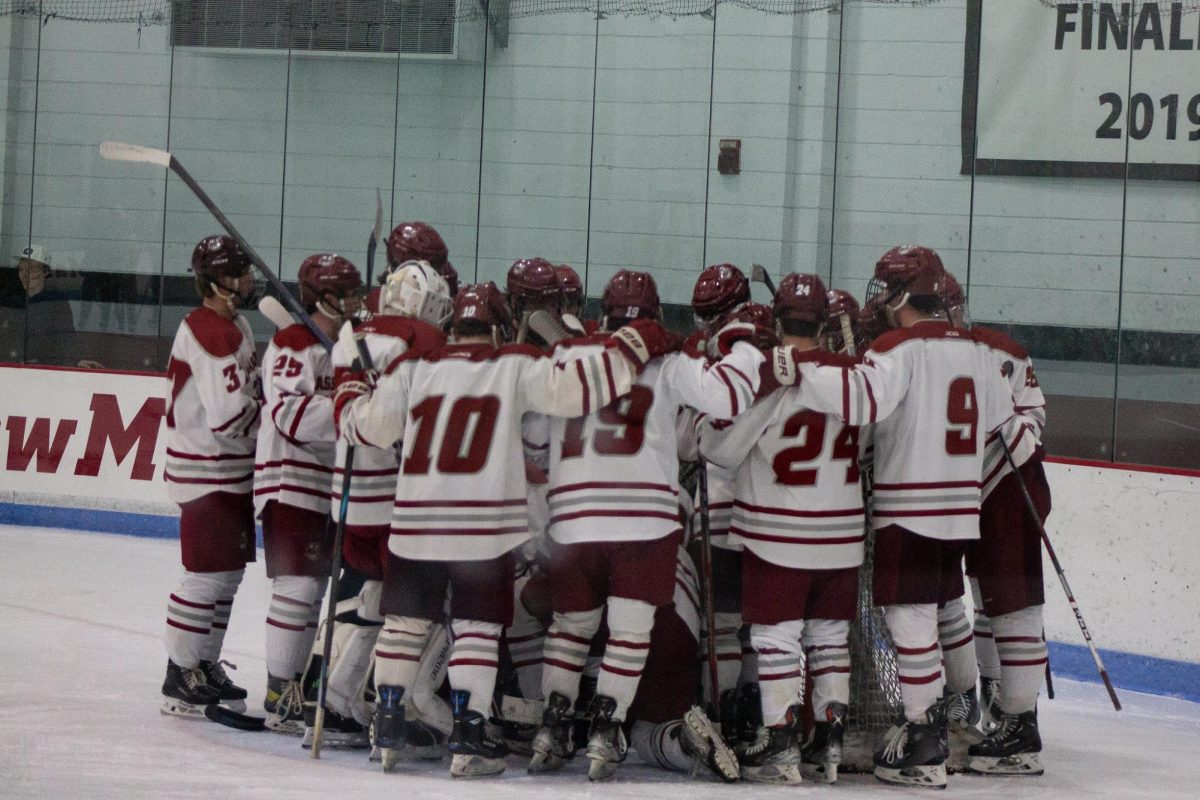Assistant professor of Communication Studies at Northeastern University and affiliated faculty with the Network Science Institute at Northeastern Brooke Foucault Welles spoke in the Communication Hub at the University of Massachusetts on March 23 as part of a series on media and justice.
Foucault Welles discussed her current work in collaboration with fellow Northeastern professors Sarah J. Jackson and Moya Bailey. Working with network analysis, qualitative discourse analysis and digital humanities, the project hopes to examine the effects of hashtags like “#BlackLivesMatter,” “#GirlsLikeUs” and “#BaltimoreUprisings” in the mainstream media.
Foucault Welles argued that “social media platforms, especially Twitter because of the particular affordances that it has, are vital vehicles for social change initiated by people who are outside the mainstream. So, folks who don’t otherwise have access to these kinds of elite meaning-making spaces,” referencing spaces with significant reach like presidential debates.
The presentation focused on three case studies surrounding three separate hashtags that have sparked some sort of social change recently.
The first hashtag discussed was “#myNYPD” in which a seemingly innocent hashtag the New York Police Department initiated was turned around by the public and brought attention to police violence at the time.
The original tweet said “Do you have a photo w/ a member of the NYPD? Tweet it and tag it #myNYPD,” and was sent out in April of 2014, two months before the murder of Michael Brown in Ferguson, Missouri. Afterward, the public attached the same hashtag to pictures showing police brutality.
Data gathered showed the hashtag was used 13,631 times from April 22-24 and after analyzing many of the tweets, Foucault Welles noticed the incongruous tone between the text and photos. Much of the text were filled with sarcasm while its pictures were much grislier.
Other tweets with the same hashtag also embodied collective rage where the text specifically pointed out racial bias in the police force attached with graphic images. Copwatch tweeted on April 22, 2014, “Before 17-year old Deion Fludd died of his injuries, he said he was beaten into a quadriplegic by #myNYPD.” The photo attached was of Fludd laying in his hospital bed hooked up to a machine as his presumed girlfriend kisses him.
Ultimately, the case study showed how the collective use of the hashtag was able to spawn a greater alternative narrative. Foucault Welles said, “Individually, these pictures got no traction, so they were not in the news individually. But when they came together under the collective auspices of this hashtag… suddenly they become newsworthy. So, this is the kind of mechanism of network counter publics on Twitter. They’re able to come together, infiltrate the mainstream and shift the conversation to at least be inclusive of the possibility of the alternate narrative, if not to actually cover the alternate narrative itself.”
One of the most notable sudden transitions in narrative occurred with “#Ferguson” after Michael Brown was killed in August 2014.
While examining 13,631 tweets released the first week after Brown was killed, Foucault Welles and her team were able to determine where the conversation started and how it evolved.
Low-level activists in the form of regular citizens initiated the conversation as they were neighbors of Michael Brown who witnessed his execution, and one was even a former classmate of Brown who was live tweeting the event. La’Toya Cash tweeted, “Ferguson police just executed an unarmed 17 yr old boy that was walking to the store. Shot him 10 times smh.”
Along with describing what has happened, some tweeters reach out to the public for help.
Through Twitter, everyday citizens have the ability to do real-time reporting, and through this reporting, people are able to get first-hand accounts rather than ones that have been filtered through the lenses of mainstream media. Foucault Welles argued that because people were able to get first-hand accounts from Michael Brown’s community through Twitter, the message was far more powerful than the same message presented by the New York Times.
The third case surrounded the aftermath of the death of Freddie Gray who succumbed to his injuries after he was arrested by the Baltimore Police Department and taken on what locals called “a rough ride.”
After analyzing 240,262 tweets from August 26-30, Foucault Welles and her team noticed the development of two different hashtags and narratives. She explained, “One was a traditional riot framing, so #BaltimoreRiots and on the other hand we get a more traditional civil rights framing, #BaltimoreUprising — sort of a nod to the legitimate grievances rising up and pushing back against the system.”
The #BaltimoreUprising collective encompassed long-standing grievances that many had with racial bias and inequality. These mutual resentments toward institutions were catalyzed by the death of Freddie Gray and the hashtag was used as a form of protest.
#BaltimoreRiots were used by mainstream news outlets in a more detached manner, simply referencing the uprisings—especially from more conservative new sources. The mainstream media used this hashtag to shine a negative light on certain aspects of these uprisings.
Foucault Welles pointed out a tweet sent out by Fox News which said, “Milwaukee Sheriff David Clarke: “These cops were led to slaughter,” #BaltimoreRiots #Hannity,” implying the potential for violence.
Hashtag activism has allowed everyday people speak collectively on issues that eventually lead to social justice and change. It has also in some ways forced mainstream media to follow the lead of regular people rather than the other way around.
Summer Tuman, a senior communication and political science double major at UMass and an intern in the University’s communication department, appreciated the talk, as it was applicable to her areas of study involving media relations and social justice.
Tuman said “I though [the talk] was really great. It’s very important and very relevant to the digitalized society that we live in today. The ways in which all these narratives are combined to create to transform a topic, a movement, is very interesting.”
Bonnie Chen can be reached at [email protected].

